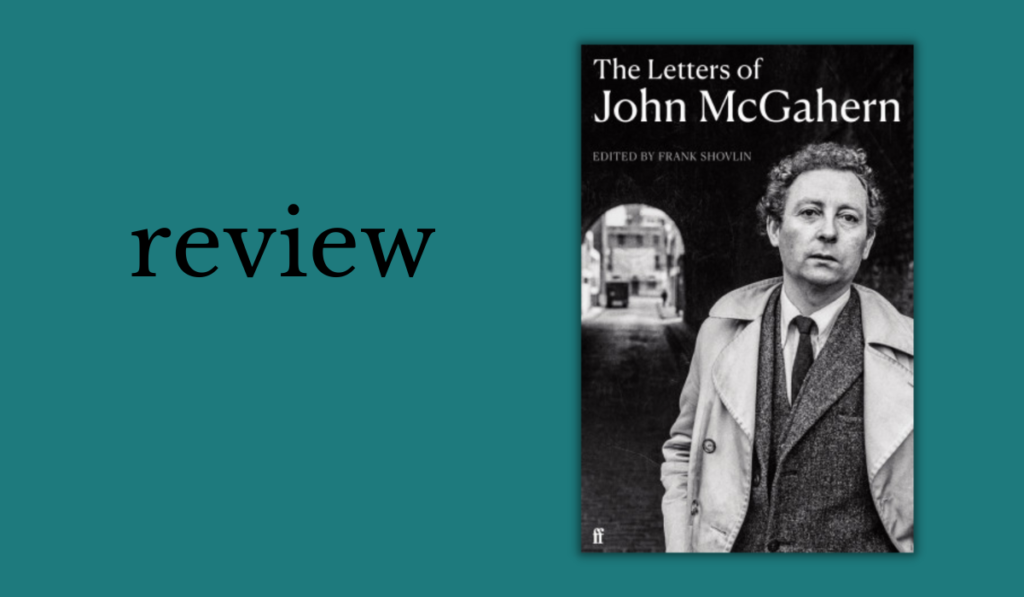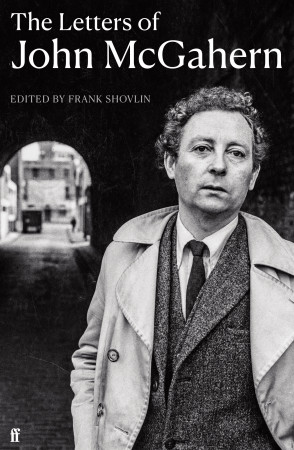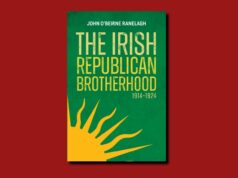
The Letters of John McGahern|John McGahern|Ed. Frank Shovlin|Faber|ISBN:9780571326662
“This collection brings to light the areas of McGahern’s life that, for better and worse, his writing did not.”—Adam Hanna on The Letters of John McGahern
by Adam Hanna
John Updike summarised the genius of John McGahern in his citation for a prize for Amongst Women (1990), calling the novel ‘everywhere knowing and tactful, [written] in language that is both simple and subtle, austere and affectionate’ (p. 664n).
This compendious collection of the Irish author’s letters show that the state of grace McGahern achieved in his two masterworks, Amongst Women and That They May Face the Rising Sun (2002), was hard-won.
Distinct tonalities
This edition, with its admirably detailed accompanying notes by Professor Frank Shovlin, is a greatly welcome addition to the literary record. The letters show how McGahern moved through distinct tonalities for different phases of his life.
Though he begins at the darker end of the spectrum, there are notable bright spots in the early letters, especially in the ones to his mentor Michael McLaverty.
One of these is this reflection, prompted by his winning the AE Memorial award in 1962, that ‘the most gladness my success, if so little can be called that, has brought […] is to affirm in my bones that all success and failure are private. What happens outside that are either lucky or unlucky accidents. For all art approaches prayer’ (p. 57). However, many of his early letters are by turns jittery, furious and insecure. The running mockery of Richard Murphy (often referred to ironically as ‘the Poet’) is so savage and consistent it approaches a form of bullying-by-coterie.
Principles of writing

In among all this, the early letters make clear how astonishingly quickly McGahern arrived at some of the principles that were to guide his writing until the end of his life. In a letter to his sister from the late 1950s or the early 1960s, he writes that ‘somebody could make a walk through the woods as passionately vivid as an ambush, provided he loved it, that is all that matters’ (p. 20). This kind of expansive meditation is rare enough in the early letters, but it shows the influence of Patrick Kavanagh, who appears in mildly disguised form in one of McGahern’s stories and delivers a similar sentiment. In another letter from the same period, he writes that ‘you can’t describe something through an emotional fog, […] you must imagine it clearly and then select its most essential images’ (p. 19).
Caustic wit
It is easy, but perhaps misleading, to pick out these moments from the early letters.
There is much in them that is impatient, intolerant and irascible, and much of the small change of literary life is here too.
What is wise and funny in the letters might form a subsequent slim selection of the kind McGahern himself made from the letters of John Butler Yeats. The McGahern who comes to light in the letters, both early and late, has a laconic, caustic wit. His early novel The Dark (1965) was banned, and he was famously fired from his job as a teacher by the Irish church-state matrix of the 1970s. However, he evinces more anger at poor choices by publishers. Of a sensationalist cover of a US edition of The Dark, he writes, ‘certainly the Panther cover deserves banning’ (p. 282).
Later letters
The later letters have an ease and perspective to balance the wild insight of the early ones. McGahern recognised this change in himself. In a 2004 interview with Hermione Lee he recalled that ‘somebody said about me recently in Ireland that I had everything wrong. That when I should have been enjoying myself, I was full of violence and darkness, and now when I should be saying my prayers, I’m beginning to enjoy myself’.
The most sympathetic McGahern who appears in these later letters is the one who enjoyed affectionate and scholarly friendships with Seamus Heaney and Brian Friel.
He is the one who writes some of the best letters of his life to his French translator, Alain Delahaye. He is the one who liked to meet friends at his favourite bar, Blakes of the Hollow, in Enniskillen, and who worked heroically to complete his final book, Memoir (2005), in the face of a terminal cancer diagnosis.
If his Memoir shadowed much of the same material as The Barracks (1963) and Amongst Women, the world that emerges from the late letters in this volume is the one that informs Rising Sun. These lakeside letters richly show that last novel to be, to borrow a phrase from Yeats, ‘no rootless flower’. Here are the models for the ‘newsy’ Jamsie from across the lake; for the local plutocrat, the Shah; for the abused labourer, Bill Evans; and many others.
The university man
One underestimated element in McGahern’s life that these letters highlight is the university man, the seminar-room-haunting highbrow. Hints of this shadowed identity are in the novels, notably in the figure of the barn in Rising Sun, a Beckettian structure that is perpetually being worked on and never any closer to being finished.
McGahern’s life was shaped by universities, including stints in Reading, Newcastle and Durham in the UK; UCD and UCG (later NUI Galway) in Ireland; and a long relationship with Colgate in the USA.
This large part of his life is not given the recognition it deserves, perhaps because he wrote no campus novel, and his stories feature no itinerant university professor, shuttling by jet across the ocean as McGahern himself did.
Perhaps scenes like these are lacking from his work because showing off his erudition would have been contrary to his ideal of ‘the good manners of the mind’. In one letter he praises his friend Jimmy Swift, who McGahern recalls could easily play with ideas from many books and writers without footnoting his conversations with impressive names or book titles. This seemed an ideal to McGahern, and it was one that he emulated.
Illuminating
Rather, McGahern’s life is often associated with the worlds that he wrote about. This was as times to his chagrin: ‘the myth of Farmer John is not my doing’, he writes to a correspondent at one point (p. 798). However, as these letters show, there he was, teaching, lecturing and, on one memorable occasion, upstaging Robert Lowell at a well-attended reading in Boston.
If he had written occurrences like these into his fiction, his readers might have gained a sharper idea of how he spent much of his life before now.
This collection brings to light the areas of McGahern’s life that, for better and worse, his writing did not. It is illuminating and enjoyable, and the full and scrupulous notes make it an essential tool for scholars of McGahern’s work.

Adam Hanna is a Lecturer in Irish Literature at UCC and the author of Northern Irish Poetry and Domestic Space (Palgrave, 2015). He is also, with Jane Griffiths (Wadham College, Oxford University) the co-editor of Architectural Space and the Imagination: Houses in Literature and Art from Classical to Contemporary (New York: Palgrave, 2020). He is the co-editor of the forthcoming edited collection Law and Literature: The Irish Case (with Eugene McNulty, Dublin City University, forthcoming with Liverpool University Press, 2021).











